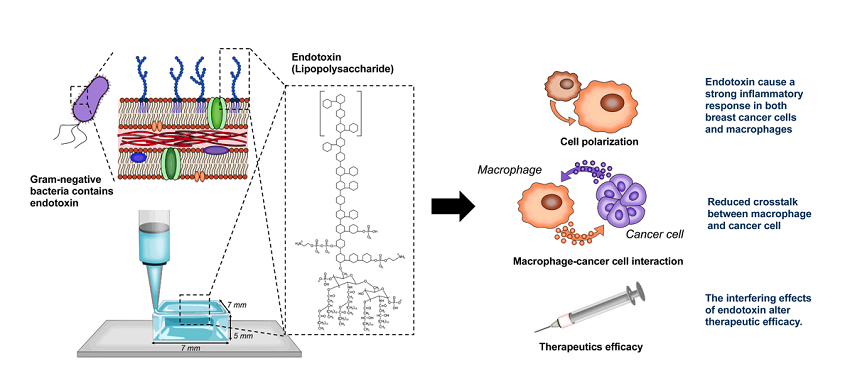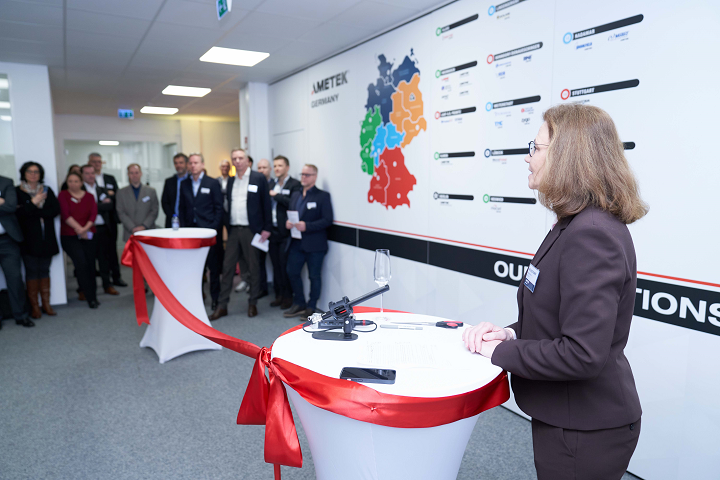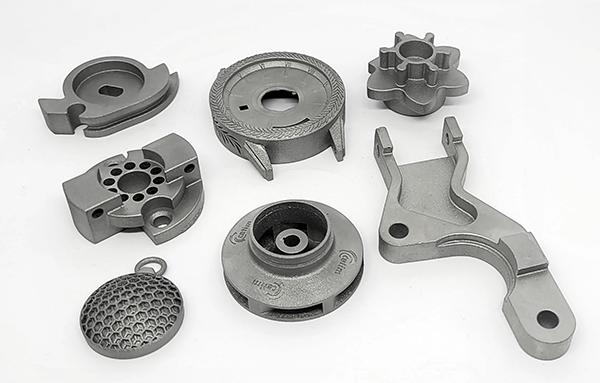The top story of today’s 3D Printing News Briefs: Wohlers Report 2023 has been released! In other business news, Ametek has opened a Customer Center of Excellence. On to materials, Uniformity Labs launched a nickel alloy for laser powder bed fusion and Desktop Metal launched three new materials. Finally, a joint study revealed the true impact of endotoxins on the accuracy of 3D models for cancer drug testing.
Wohlers Report 2023 Released, Shows Worldwide Growth
This week, Wohlers Associates, powered by ASTM International, announced that it had released Wohlers Report 2023, which features insights from 10 industry sectors and intelligence from experts in 35 countries. This 28th annual report about the additive manufacturing industry reveals that there’s been a worldwide growth of 18.3% in AM products and services, which continues a long-time trend of double-digit industry revenue growth. New content in this report includes a look at the growing number of AM codes and standards, as well as large-format AM applications like construction and aerospace, and it also features an expanded section with insights into the future of the technology, such as thoughts about workforce development, automated production, and emerging applications. Other new topics this issue talks about include point-of-care AM in healthcare, opportunities and challenges associated with metal binder jet technology, recycling and the circular economy, and more.
The assessments made in Wohlers Report 2023 seem in line with the latest SmarTech Analysis reports, which show that the growth rate for all 3D printing materials, software, hardware, and services for 2022 is estimated to be 23%, even in today’s uncertain economy. Plus, even though Q4 2022 saw the lowest year over year growth of any quarter of the year, it still managed over 16% growth over Q4 2021. The recently published AMPOWER Report 2023 also provides a detailed look at the metal and polymer AM markets, including supply chain, materials, cost, and design characteristics. To learn more about all three of these important AM industry reports, tune in to our next Printing Money podcast episode, coming the second week of April!
Ametek Opens Customer Solutions Center in Germany
Ametek GmbH, part of AMETEK Inc., has opened an exciting new Customer Solutions Center in Weiterstadt, Germany. Serving a multitude of industries, including automotive, oil and gas, aerospace and defense, and power, the state-of-the-art facility is the first technology solutions center of its kind in the country, and offers visitors a place to learn the latest news about the company’s many brands, as well as experience product demonstrations of multiple AM-adjacent technologies, such as optics metrology, elemental analysis, and surface measurement. The latest products from many of AMETEK’s businesses will be at this new facility, which means there will likely be some 3D scanners available, as Creaform was acquired by the company several years ago. The Center will also provide service capabilities and product support, as well as student tours, in-person demonstrations, career days and jobs fairs, and training.
“We are thrilled to take this next step in expansion to solve our valued customers’ complex challenges using AMETEK’s differentiated technology solutions,” said Wiebke Rumpf, AMETEK Germany Country Manager. “The new Customer Solutions Center represents a significant milestone for AMETEK’s operations in Germany, and its location near Frankfurt is perfect for customer events, distributor meetings, customer demos and much more.”
Uniformity Labs Launches Nickel Alloy for LPBF Printing
California-based engineered materials company Uniformity Labs has officially launched its UniFuse IN718 Nickel Alloy, with optimized parameters for laser powder bed fusion (LPBF) technology, in an effort to address the industry’s challenge of economically achieving serial production in AM. High-Performance Scanning parameters were designed for printing the material with 60um layer thickness using 400W lasers, enabling improved, more uniform mechanical properties compared to competitor powders and a 2.2X faster exposure time. With this optimized particle size distribution and higher tap density, a denser, more highly uniform powder bed is achieved, which allows for repeatable part builds at the highest throughput and more efficient laser use. Additionally, Ajay Krishnan, research leader at independent engineering consultancy EWI – Buffalo Manufacturing Works, completed a detailed material property validation study on the performance of UniFuse IN718.
“With UniFuse IN718, we deliver best-in-class mechanical properties, surface finish, printing yield, and part reliability with substantially increased throughput printing at 60um layer thickness. This is significant for advancing AM as a viable pillar for industrial manufacturing and shows that our technology and process deliver on the promise of no compromise additive manufacturing,” said Uniformity Labs Founder and CEO Adam Hopkins.
Desktop Metal Qualifies Three Metals for Binder Jetting
With its latest qualifications, Desktop Metal now has what it calls a “market-leading” 23 materials for more flexible metal binder jet 3D printing. The company collaborated with three other organizations to qualify three new metals, starting with 304L stainless steel for use with its Shop System. The company partnered with one of Europe’s largest industrial research organizations—CETIM, the French technical center for mechanical industries—to qualify the austenitic stainless steel, which is known for its high tensile strength, corrosion resistance, and durability. CETIM will now offer the material on the Shop System to support fast printing of critical replacement parts in the French energy sector.
The next two new materials have been qualified for the DM Production System. First, Desktop Metal partnered with Detroit-based customer TriTech Titanium Parts LLC to qualify titanium alloy Ti64 for binder jetting. The popular Ti64 has high strength, low thermal conductivity, and low ductility, which all make it hard to machine, and shaping the metal using MIM requires special knowledge and processes. But using binder jet 3D printing can make production of complex titanium parts simpler. Finally, gas atomized metal powders producer Sandvik Additive Manufacturing, and a top five global automotive manufacturer, collaborated with Desktop Metal to qualify copper alloy C18150, also known as chromium zirconium copper. This metal, which can withstand service temperatures up to 500°C, works well for many commercial and industrial sectors, including thermal transfer and automotive applications, due to its combination of conductivity, corrosion resistance, and strength.
Low Endotoxin Materials Improve Reliability of 3D In Vitro Models

Illustration to show how the presence of endotoxins impacts the credibility of 3D models. This figure is a modified version of the original graphic in Heinrich, M. A., Heinrich, L., Ankone, M. J. K., Vergauwen, B., & Prakash, J. (2023). Endotoxin contamination alters macrophage-cancer cell interaction and therapeutic efficacy in pre-clinical 3D in vitro models. Biomaterials advances, 144, 213220.
A joint study by researchers from the University of Twente and Darling Ingredients’ health brand Rousselot investigated the impact of endotoxins on 3D breast tumor-immune cancer models. Their findings show that using highly purified gelatin biomaterials for 3D in vitro models for cancer drug testing can majorly improve their accuracy, reproducibility, and reliability, and, as such, lower the need for animal testing in preclinical trials. The team compared 3D models using standard gelatins and GelMAs, or Rousselot’s purified X-PURE gelatin and X-PURE GelMA biomaterials with low endoxin levels, and found that these lower levels majorly affected the validity of the 3D printed model in terms of the inflammatory reaction, receptivity of immune cells to cancer cells, and reliability of therapeutic outcomes.
“This study revealed that 3D models of novel breast cancer immunotherapies display clear therapeutic efficacy differences depending on the level of endotoxins in gelatins and methacryloyl gelatins (GelMA) used in in vitro systems. Biomaterials with low endotoxin content could lead to a more accurate representation of the safety and potency of novel therapeutics. This can improve the validity of 3D in vitro models and help to reduce animal testing,” said Dr. Kathleen Jacobs, Global Regulatory Affairs Director, Rousselot.
Subscribe to Our Email Newsletter
Stay up-to-date on all the latest news from the 3D printing industry and receive information and offers from third party vendors.
Print Services
Upload your 3D Models and get them printed quickly and efficiently.
You May Also Like
Making 3D Printing Personal: How Faraz Faruqi Is Rethinking Digital Design at MIT CSAIL
What if your 3D printer could think more like an intelligent assistant, able to reason through a design idea, ask questions, and deliver something that works exactly the way the...
Reinventing Reindustrialization: Why NAVWAR Project Manager Spencer Koroly Invented a Made-in-America 3D Printer
It has become virtually impossible to regularly follow additive manufacturing (AM) industry news and not stumble across the term “defense industrial base” (DIB), a concept encompassing all the many diverse...
Heating Up: 3D Systems’ Scott Green Discusses 3D Printing’s Potential in the Data Center Industry
The relentless rise of NVIDIA, the steadily increasing pledges of major private and public investments in national infrastructure projects around the world, and the general cultural obsession with AI have...
Formlabs Teams Up with DMG MORI in Japan
In late June, Nick Graham, Chief Revenue Officer at Formlabs, announced on LinkedIn that the company had partnered with DMG MORI, one of the world’s leading machine tool companies, to...





































